 |
|
| Issue #31 • January/February, 1995 |
“What were you listening to when I got to your house? Sounded nice. I don’t think I’ve ever heard it before.”
O.E. MacDougal looked at me from across the table. He’s the poker playing friend of Dave Duffy, the fellow who publishes this magazine. It wouldn’t be much of a reach to say that he’s helped me write an article or two in the past.

George Washington Carver
He got a distant look in his eyes.
The waitress came over with the coffee pot and looked at me.
I nodded and she refilled my cup.
She turned to Mac. “More coffee, Hon?”
“Please.”
She put her hand on his shoulder as she poured until his cup was refilled. Then she left.
“Raff,” he said.
“What do you mean, raff?”
“Joseph Raff.”
“Who’s that?”
“The composer you were asking about. I had his fifth symphony on. It’s called the Lenore Symphony.”
“I’ve never heard of him.”
“I’m not surprised. But he was quite the composer in his day. Mendelssohn and Liszt thought a lot of him and many in his time thought he was the greatest symphonist of the late 19th century.”
“What happened to him?”
He shrugged. “He fell into obscurity. I’m not sure why. It happens. Today you can’t even find his name in the indices of books about classical music.” He pushed a little piece of chicken around his plate. “Other than the Grove Dictionary, I can think of only one that even mentions himMichael Walsh in “Who’s Afraid of Classical Musicand he only mentions him in one paragraph.” He speared the piece of chicken but held it on his fork. “He’ll have his day again, though. Other composers have fallen into disfavor only to be rediscovered, later. Bach, Dvorák, Berlioz, even Beethoven. Sometimes, it takes a generation or two.”
“But you’re not going to wait.”
“Life’s too short not to listen to good music. Of course, not everybody has the same taste in music I’ve got.” He laughed. “By the way, what are you writing about this issue?”
“I’m going to try to explain the national debt.”
“Oh.” He ate the chicken.
“How it came about, what it means to us, how it’s going to affect our future…” My voice trailed off.
“What do you know about it?”
“Nothing, yet. I’m reading up on it.”
He pushed another piece of chicken around on his plate.
“There’s not much to write about, otherwise. It’s the January/February issue. Kind of a slow time of the year.”
“Depends on what you’re interested in. February is Black History Month.”
“I don’t imagine much of our readership is black. Besides, what would there to be to write about? I usually do something historical and try to tie it in with the readership.”
“That’s why I said Black History Month. You should write something about George Washington Carver.”
He put his fork down and took a drink of coffee.
The waitress came back. “Everything okay?.”
“It’s wonderful, Betty.”
She smiled at him and left again.
A baby in a booster chair two tables away kept grinning at him. Mac couldn’t help but smile back.
We ate in silence for a few minutes. I don’t always like silence. “George Washington Carver?
Wasn’t he the peanut guy?”
“Yeah, he said, the peanut guy.”
“Why would my readers be interested in him?”
“There was a time when he was one of the most famous men in America. Besides that, if your readers knew much about him, they’d identify with himwhite readers, black readers, brown, yellow, red…do we have any other colors?”
“Why?”
“Carver believed in something your readers seem to have in great abundance but which is otherwise sadly lacking in most of this country today.”
“Peanuts?”
He looked up at me. “No, self reliance. Those little words that appear on the cover of your magazine issue after issue. Carver stressed self reliance.”
“Oh.” I thought a minute. “I don’t think there’s really any kind of a story there, but tell me a little about him anyway.”
Born a slave
He brought his fork to his mouth and held it poised for a moment, then put it down. “Let’s start from the beginning. He was born in Newton County, Missouri. No one knows just when. He may have been born as early as 1860, but most historians think he was born in 1864, the next to last year of the Civil Waror, if you’re from the South, the War Between the States. He was owned by Moses and Susan Carver of Marion Township, which is near Diamond, Missouri.”
“Owned?”
“He was a slave. The guy who owned him, Moses Carver, was pretty interesting himself. He was an eccentric intellectual living out there in what would today pass as the backwoods of Missouri. When his brother and sister-in-law died, some time in the 1840s or ’50s, he and his wife raised the six kids they left. The kids became part of the labor force on Carver’s farm. That’s the way it was in those days. No TVs, no Nintendo, no malls to hang out at. The farm was prosperous but as the kids grew up they left, one by one, and the labor shortage became more acute. By the time the last of them was old enough to leave, Carver was farming over 100 acres.
“The Carvers were philosophically opposed to slavery and during the Civil War they supported the Union. But, to make up for the labor shortage, he bought a 13-year-old slave girl from a neighbor. Her name was Mary. He’d have preferred using hired labor but, with land so cheap, no one worth a lick was willing to work for someone else if he he could start his own farm. So it meant either hire someone not very industrious or buy a slave.”
“I gather he bought a slave.”
He nodded.
“Did he and his wife have any children of their own?”
“No.”
“So, this girl Mary?…”
“She worked out for them pretty well and in 1859 she gave birth to a boy named Jim. Jim was most certainly part white but history no longer remembers who his father was. He grew into a large powerful young man and provided a great deal of labor for the Carvers. But, in 1883, he died of smallpox. He was 24.
“Sometime around 1864, Mary had another baby, George. Unlike Jim, he was sickly and frail, right from birth.”
“Was part white, too?”
He shook his head again and took a sip of his coffee. “It’s almost certain he wasn’t. His extraordinary dark coloring and other features he had led most who met himboth blacks and whitesto believe he didn’t have any white blood in him at all. Later in life, it would cause him problems with other blacks.”
“Why would it be a problem with blacks?”
“We’ll get to that.”
“Okay. But how come he was so sickly?”
“I don’t know but historical evidence supports the theory that he was tubercular and suffered chronic bouts of pneumonia.”
Kidnapped
“Did Moses Carver feel like he got a bad deal with Mary because she had a sickly son?”
“Not at all. Mary and her sons were more than just slaves to the Carvers. The Carvers went out of their way to treat them like family. In fact, sometime near the end of the war, Mary and Georgewho was still a babywere carried off by bushwackers from Arkansas…”
“Bushwackers?”
“Yes. Missouri was one of the slave states that stayed in the Union. Northern sympathizers were constantly terrorizing anyone with Southern leanings and the Southerners returned the favor. The raiders supporting the South called themselves bushwhackers. The ones supporting the North were called jayhawkers. On this particular night, bushwackers carried off Mary and George.”
“They didn’t kidnap Jim, too?”
“He was hiding with Moses.”
“So, what happened to George?”
“Carver wanted them both back. He had a neighbor, a man named John Bentley, who served the Union Army as a scout. He asked Bentley to go into Arkansas and find them. He did, but all he came back with was George. He never found Mary and nobody knows what happened to her. But, as a reward, Moses gave him a prized race horse for returning George.
“After the war, of course, slavery was outlawed but the Carvers raised the two boys and Moses and Susan were the only parents George ever remembered.”
“So, George never really knew his mother?”
“No, and the only mementos he had of her were a spinning wheel she had used when Moses owned her and the bill of sale that was his record of her purchase.”
“Kind of hard to imagine living like that.”

Carver as a young artist
“It is. But the Carvers were very good to them. George was so frail and sickly that they excused him from the farm chores. Instead, he took the place of Mary and helped Susan in the house. And, when he was done with his chores, he was allowed to go out on his own to play and indulge himself in the hobbies he was acquiring. The Carvers knew he was special. I don’t know if anyone recognized him as a genius yet, but he was certainly different from the other kidsboth black and white. He learned quicker and learned more. He showed a fascination with collecting things: snakes, frogs, plants, rocks, almost anything, and he had an insatiable curiosity about the world around him. One of his childhood projects was to plant a garden in the woods; he went there everyday and experimented with things so he could see how they grew. He learned so much, adults started coming around to ask his advice on how treat their own plants.
“Everyone liked him, blacks and whites alike, but it was whites he spent most of his time with. The white children he grew up with became some of the best friends he ever had and he corresponded with many of them until he died. Perhaps it was because the Carvers raised him, but throughout his life, though he always felt a kinship with blacks, he was more comfortable when he was around whites. I think a lot of black activists today resent him because he was like that.
Search for an education
“But nothing lasts forever and he finally ran into discrimination. He and his brother were admitted to public school. They weren’t there long before they were thrown out because of their race. This in spite of the fact that the new Missouri state constitution, written in 1865, made education of blacks mandatorythough, ironically, it didn’t make it mandatory for whites.”
“So he didn’t get an education?”
“Not at first. When he was about 11, a young white man named Steven Slane came to Diamond and the Carvers had Slane tutor him. But that didn’t last because, within a year, Slane had no more to teach him.”
“What do you mean?”
“He just had no more to teach him. George was smart. Real smart. He was smarter than Slane and he quickly learned everything Slane had to teach him. So he had to go elsewhere to continue his education, and that elsewhere was a nearby town called Neosho where there was a school for blacks. There, under a black man named Stephen Frost, he continued his education. But the problem was that frontier schools weren’t ready for a student like him. The teachers weren’t all that well educated themselves and George, though still a boy, often knew more than they did.
“As he grew older, he started wandering. He left the Carver home when he was 12 or, at most, 13 and started going from town to town in search of an education and a future.”
“He was just a kid, though.”
Mac shrugged. “When he was 14, living in Fort Scott, Kansas, he watched a white mob lynch a black man. He left that town the next day. But now he realized life was not just going to be unfair to him, it was going to be dangerous.”
“Did this change the way he viewed whites?”
“I don’t think so. You know, most whites were very good to him.
It’s interesting that he often denied the existence of race as a valid way of categorizing people. Yet, anyone could see that while most of his friends were white, he often spoke of feeling a special obligation to help his fellow blacks. So I don’t know what white and black really meant to him.”
“Where’d he go from there?”
“He couldn’t have been more than 16 and he was living in a small town called Minneapolis, Kansas. He got a small bank to loan him some money so he could open a laundry business. And, of course, in Minneapolis, George did what he always didhe made friends in the white community. A local doctor saw how bright he was and started loaning him books. For the next several years, his education came mainly from reading and talking with people.”
“How did these white friends feel when they saw him discriminated against?”
“Once they befriended him, they didn’t like it. There were occasions, in restaurants, for instance, when his friends were offered service but he was denied and they found themselves outraged. If Carver was upset by discrimination, he didn’t let on. More often he was embarrassed because he felt he was causing his friends trouble.”
“Why?””
It was his way. He was more concerned with how his friends felt than how someone was treating him. But discrimination finally slapped him in the face when he mailed an application for admission to a small Presbyterian college in Highland, Kansas. They accepted him. But no one there realized he was black until he showed up. They rejected him when they saw him. It would be another seven years before he applied to another collegeand that was because his friends urged him to.
The homesteader
“In the meantime, like many other frontier settlers, he bought a quarter section and started a homestead.”
“What’s a quarter section?”
“A square mile is 640 acres. One quarter of that is 160 acres and is called…”
“A quarter section.”
“That’s right.”
“Hey, I can figure those things out.
“He smiled. “So, he started his own farm and, because wood was scarce, he built a sod house like most of his neighbors did. He fit in very well even though his neighbors were mostly white and blacks were generally looked down upon by the whites.”
“Carver struck everyone as different?” I asked.
“That he did. No matter where he went, once the inhabitants of a community got to know him, he was usually regarded as the most educated and intelligent man around. This happened just about everywhere and it was an opinion shared by blacks and whites.

Carver around 1897
“It was while living in Kansas that he first took art lessons from a black woman named Clara Duncan. He also joined a literary societymade up almost exclusively of whitesand he was elected the assistant editor.
“But there was no future in a sod house or in dabbling with literary societies. He was still looking for a future and in the late ’80s he moved to Iowa. He took a loan against his Kansas homestead and opened another laundry. But, though he had a second job working in a hotel, he had trouble keeping up loan payments and he finally signed the deed over to his creditor to settle the debt. But while in Iowa, yet another doctorMilholland was his namesaw the enormous potential in Carver and he and his wife persuaded him to enroll at Simpson College in Indianola, Iowa.
“Simpson wasn’t like the college in Kansas. One black had gone there before Carver and there were several students of Chinese ancestry enrolled when he applied.
“But after paying his enrollment fees all he had left in his pocket was ten cents. So, to support himself, he found a little shack and reopened his laundry.
“The other students kept their distance, at first, but, as usual, Carver had a way of awing people with his intelligence and winning them over with his easy ways and soon both the students and faculty welcomed him. Pretty soon his fellow students came by to talk and study with him in the shack. All he had for furniture were wooden boxes he’d scrounged from the merchants around the town. But his new friends took up a collection and bought real furniture. Then, while he was at class, they furnished his shack. Over the next year, they often slipped money and concert tickets under his door whenever he was gone and, until his dying day, he never knew who among the students and faculty his benefactors were.”
Carver the artist
“What kind of courses did he take?”
“He wanted to be an artist so he enrolled in art classes. He was a very gifted painter. But the art teacher, Etta Budd, tried to talk him out of an art education. First, he was black; second he was the only male student in the department. I think those two things made her uncomfortable. But she quickly saw his enormous talent, and she too accepted him.
“Then she became aware of an even greater talent he had. It was his way with plants. He cross-fertilized to create unusual hybrids and he made his own grafts. Many of the students and faculty at Simpson received plants from him as gifts.
“So, once again, but for different reasons, she felt it was be a mistake for him to pursue art. As an artist, even a good one, he had an excellent chance of starving to death. But with his ability to work with plants, there was the possibility of a livelihood. So she encouraged him to enroll at Iowa State.”
“Why there?”
“Her father was a professor of horticulture there.”
“Oh.”
“So at the end of that school year, he went to Ames, the home of Iowa State.”
“Your letting that chicken get cold, Mac”.
We looked up. It was Betty scolding him.
“You stop talking.” She turned to me and said, “And you let him eat.” Then she smiled and walked away.”
Better do as the lady says,” he remarked and took another bite.
“I take it he was well received at Iowa State, too.”
“Nope. His first days there were a disaster. He was greeted with derision and hostility by the students from day one. He was the first and the only black on campus. Boys shouted racial slursand I don’t mean behind his backto his face, and the manager of the cafeteria wouldn’t allow him to eat in the dining room. He had to eat in the basement with the kitchen help. In fact, they wouldn’t even let him live in the dormitories so some faculty members had to set up a room for him in an empty office.”
“I wouldn’t have put up with it. In fact, I’d have left.”
“Well, he was unhappy, to say the least. He wrote to a white woman, a Mrs. Liston, who had befriended him back in Indianola when he attended Simpson. He told her what was happening and how he felt about it. The next day, she went to Ames, found Carver, and spent the entire day with him. She ate with him in the basement, walked the campus with him, and stayed the night on campus. Then she left. She must have known what she was doing because the racial slurs stopped. People got curious about him. Soon he was treated better and began to make friends.
“By the time he left, several years later, he’d made some of his best friendslifelong friendsthere. Fellow students and the faculty no longer allowed anyone to slight him and, like his earlier friends, they became enraged when he was discriminated against.”
“What kind of student was he?”
“He was very good in most subjects and exceptional in the ones he liked best. But, even though he was now studying horticulture, he didn’t give up painting. While a student there, one of his paintings was selected to represent the State of Iowa at the World’s Columbian Exposition in Chicago in 1893.
“By the way, some of the people who were to help him a lot in later years were people he met at Iowa State. Among them was a boy who later became Secretary of Agriculture, then Vice President of the United States under F.D.R. His name was Henry A. Wallace and he was the son of one of the professors. Wallace spent part of his childhood years following Carver all over the Iowa State campus and through the fields around Ames while Carver opened up the world of botany to him.
Tuskegee
“He got his bachelors and stayed to complete his masters. When he finished, many felt he was the equal or better of his teachers and they hoped he’d stay on to teach and do research. But I think he already knew he wasn’t going to. He toyed with the idea of taking his education and going to Africa as a missionary to improve the lot of black Africans. But word about him was spreading among the blacks in the South, and several black colleges vied for his attention including Alcorn Agricultural and Mechanical College and Tuskegee Institute. There was a great demand for capable black educators and Carver was the first black in the United States to obtain a postgraduate degree from a white college.
“He finally wound up settling on Tuskegee Institutenow Tuskegee University. The principal there, a man who was becoming a legend himself, was Booker T. Washington. Washington wrote him frequently. He talked about his own mission at Tuskegee and how Carver could help.
“Iowa State still wanted him to stay and, if he had, he would have pursued a doctorate and he would have been the first black to get one. But Washington won out and in 1896 Carver went to Alabama.
“Well, at least now he was going to a school where he wouldn’t face discrimination.”
“I hate to say it, but you’re wrong again. When he got there, he found himself resented by many of his fellow teachers. For one thing, they envied him for his degree from a white college. They had graduated from one or another of the few black industrial schools that existed at the time, and none of those schools then had any prestige. Also, he was paid more than two and a half times what the average faculty member received. But there was a more sinister reason: Remember I said Carver was almost certainly 100 percent African? The rest of the faculty was mulattopart black and part white and they looked down on him for being all black.”
“You’re kidding.”
“No, I’m not.”
“Boy, he got it from all sides.”
“At Tuskegee, he didn’t form the wide a range of enduring relationships he had earlier in Missouri, Kansas, and Iowaexcept among the students. The students really liked him.
“Still, he made friends with quite a few whites. And this ability to form friendships with whites became an important asset at Tuskegee. More often than not, it was whites who got him what he needed at Tuskegee. Among them was one of his instructors at Iowa, James Wilson, who later became Secretary of Agriculture. Wilson served as Secretary for 16 years under Presidents McKinley, Theodore Roosevelt, and Taft. And even though the Department of Agriculture didn’t have the authority it has today, Wilson aided Carver and, therefore, Tuskegee however he could. He did things like send free seeds for the experiment station Carver set up there and he visited the school several times, adding to the school’s prestige when he did. He even got President McKinley to visit the school. Tuskegee’s reputation was elevated as a direct result of this.
“He had little time for art anymore and there was almost no funding for an experiment station, another of his loves. And there was no research laboratory either. He had to build his own. And he did, using discarded jars and implements he found in trash piles around the school.”
“From trash heaps?”
“There was no money. Tuskegee was a black school and it received fewer funds than the white colleges so he had to conduct his research on a shoestring budget.
“Also, his position was director of the of the agricultural department and Carver, for all his genius, had no talent for either organization or administration. This shortcoming would plague him for most of his life.
“I’ll tell you right now, if you want to hear about Carver’s shortcomings, I can tell you about them. He wasn’t a good administrator and he didn’t deal with bullies very well. But I’m not going to spend a whole lot of time on his faults. Its enough to say that he soon found himself in a bitter rivalry with one of the other faculty members. This was a man named George R. Bridgeforth. It was a rivalry even Booker T. Washington could never resolve and it hounded Carver until after Washington’s death when Bridgeforth left the Institute.”
“What do you think is the most important thing Carver did?”
He thought a moment. “He did two important things to my way of thinking. First, he stressed the concept of self reliance to the poor. That contribution has been largely forgotten so let’s say it’s a lesson for us to relearn today.”
“What else?”
Help for the poor
“What else?” he said to himself and looked up at the ceiling for a moment. “Carver genuinely wanted to raise the standard of living of the poorand blacks were the poorest of the poor. But he knew that before they could become educated, before they could go out and get an education, before they could be free, they had to be able to feed themselves.
“But you’ve got to understand Southern agriculture as it existed in his time to know what he was up against. There were many small farmers but not many small farms. Most of the land was in the hands of large landowners who leased it out. The people who farmed were mainly sharecroppers. But their farming techniques were backward. They didn’t even use farming methods that were modern by the standards of their day.
“And there was the problem of cotton. King Cotton, they called it. If you had a farm, it’s likely that that’s what you grew. But, with so many cotton producers, the market price of cotton stagnated while the cost to produce it kept going up. To compound the problem, cotton depletes the soil, and as soils became depleted, less cotton could be produced on any given parcel of land. So farmers got less for their efforts. But if a farmer went to the bank for a loan to buy seed, tools, fertilizer, or even more land, the creditors insisted that cotton be grown because that was the crop they felt safe with.”
“The old vicious circle,” I said.
He nodded. “This dependency on a single crop and the depletion of the soil were the problems Carver set out to solve. And though he was eventually lauded by the agricultural businessesparticularly the peanut growersit was the man at the bottom he most wanted to help.
“There was no single great discovery or invention he found. One of his first experiments, though it doesn’t sound like much, was to try supplementing hog feed with acorns. I think everyone thought he was crazy for attempting it but after he published his results, he immediately won recognition from experimental stations at white colleges for both his presentation and his practical approach. There were large areas with oaks where the acorns were left for the squirrels or to rot on the ground. He invented a strategy for using them to help farmers.”
“You’re right, it doesn’t sound like much.”
Recognition comes
“No, it doesn’t. There’s a myth today that Carver somehow singlehandedly saved Southern agriculture, but it’s not true. The real contributions he made were all kinds of little discoveries, here and there, by which he hoped poor farmers could lift themselves, through self reliance. The little discoveries are overlooked, for the sake of the greater myth, and I think that does Carver a disservice.
“So, tell me what some these discoveries were?”
“Chief among them were experiments he conducted with crops besides cotton. He was looking for something that could be grown and sold by Southern farmers that would replace, or at least supplement, cotton. He experimented with sugar beets and rice and many other plants. But the plants that showed the greatest promise were cowpeas, sweet potatoes, and the plant that would make him famousthe peanut.
“Among the advantages these three plants had was that they helped rebuild the soil. Cotton depletes the soil because it uses up the nitrogen compounds there and every living thing needs nitrogen. That’s why when farmers planted cotton year after year they got smaller harvests with each successive planting until it was no longer profitable to plant on that patch of land. So they’d have to move on to a new tract.”
“And those three plants help rebuild the soil?”
“Yes.”
“How?”
“Plants, like all living things, need nitrogen to build proteins, and though the air around us is 78 percent nitrogen, they can’t just take it from the air. Sothey get it from compounds in the soil. Believe it or not, lightning produces some of these compounds and the rain washes them into the soil. But that’s not enough. More importantly, plants like legumesand peanuts are in the legume familyare in a symbiotic relationship with bacteria that convert nitrogen into usable compounds. These bacteria live on the roots of these plants, produce nitrogen compounds that dissolve into the soil, and the plants use the nitrogen compounds.
“Even plants like clover or alfalfa do thisand he experimented with those, too.”
“Don’t chemical fertilizers replace the nitrogen?”
“Poor farmers couldn’t afford chemical fertilizers.”
“I take it Carver had a thing against cotton.”
“Oh, no. He knew it was still the mainstay of southern agriculture and he conducted some very promising experiments with it, even developing his own hybrids. Scientists from Europe began soliciting his opinions and recommendations and sent seeds from Europe, Africa, and Asia to him to test at his experiment station.”
“Really, they knew who he was in Europe?”
“Yes, his name was spreading. In 1910, an English nobleman, named Sir Henry Johnston, toured the United States and spent quite a bit of time at Tuskegee. He wrote a book called, The Negro in the New World. In it he talked about Carver who, though gaining recognition among his peers, was still largely unknown outside of the South. But Johnston considered Carver as good or better than any European botanist.
“In 1916, many Americans were surprised to learn that Carver, a man born a slave, had received an invitation to become a member of the Royal Society for the Arts and Sciences in Great Britain. Newspapers began to take a closer look at him
“But these were the professional people. Among Southern Farmers there was still a great deal of resistance to the new ideas. He had to sell them on the advantages of the new crops. Farmers, by their very nature, tend to be conservative. Farming’s a gamble, but its not like a poker game where you can throw in your hand if you don’t like it and wait for another. With farming, you’ve got to play out every season and every crop no matter how bad it’s going. So you do as little as you can to put yourself at riskand trying something new is always a risk.”
Carver talks to the world
“So, how did he reach the farmers with his discoveries? I mean, it wasn’t like he could go on the Tonight Show or something like that.”
“He produced a bulletin which appeared irregularly for several years. All the colleges with experiment stations produced bulletins, but at other colleges, the scientists wrote for each other in technical language the layman had difficulty understanding. Carver introduced the concept of a bulletin that could be understood by anyone who could read. And rather than bulletins filled with theory and technical terms, he filled his with practical advice in plain direct language.
“But when farmers tried the new crops, the complaint he most often heard was that once they were harvested, no one knew what to do with them. So he incorporated into his bulletins ways to store them, cook them, convert them to household goodssuch as paints or fibers for rugs, and how to use them for stock feeds. ”
“Make paints and stuff?”
“Yes. From peanuts alone he made milk and cheeses, flour, dyes, oils, candy, mock oysters, and even instant coffee.
“A lot of his fame rests on his search for commercial uses for various products. And he came up with quite a few.
“Another of Carver’s beliefs that he expressed in his bulletins was that nature did not create waste. Waste was a human concept. He believed everything could be used whether it was leftover plant fibers, which he showed could be used to make rugs, to the stalks left after a harvest, which could be plowed under to create a natural fertilizer, something called called green manuring.
“At state fairs, he exhibited paints he had created, foods stuffs made from local weeds, and he once had an exhibit of the uses of feathers. He thought the feathers exhibit was important because it demonstrated over 50 uses for them. Then and today people thought this was ridiculous. No feather industry sprung up around his discoveries. But the point they missed was that he was showing there was no waste. For the farmer who had to be self reliant and stretch every resource and make every penny stretch, this concept was crucial. BHM is a magazine of self reliance. If your readers appreciate nothing else about the man, this one thing has got to ring a bell with them.
“How did the other scientists feel about his bulletins?”
“Scientists generally look down on other scientists who take a layman’s approach to explain their findings. But in this case, they commended him for what he was doing. They knew it was their job to help the farmers but it was like whistling into the wind. No matter what they discovered, the news wasn’t getting to the man who needed it most. And they didn’t know how to do it. Suddenly, here was this guy reaching them with real information.
“The material in the bulletins wasn’t always original. Carver didn’t waste time duplicating other people’s results. Often he copied things like recipes from Department of Agriculture bulletinsbut he always cited the sources when he didand he was unique in his ability to present other peoples information so it could be understood. In fact, as the years went by, politicians, educators, and even other scientists often came to Carver to have the works of some scientists explained to them.”
The gifted speaker
“There’s something you should know about Carver: it’s that he was an incredibly gifted speaker and perhaps more than anything, this is what laid the groundwork for his eventual fame. He spoke knowledgeably and used humor and understatement to beguile his listeners.
“At first he was asked to speak at other black colleges. As the years went by, the crowds coming to hear him speak included more and more white faces and more professional people. Later, he was in demand at white colleges.”
“Wasn’t that unusual, a black speaking at a white college in those times?”

Carver in 1916
“You bet. Sometimes, student groups stated their objections to being lectured to by a nigger’ and made public their intentions of walking out as soon as he got up to speak.”
“What did he do when they did?”
“They never did. When Carver spoke, he talked about nature, farming, science, creation….” He gestured with his hands. “Everything.
“On one occasion, two student groups made plans to walk out on him. But when he started speaking, they listened, and he went on for quite some time and when he concluded, they were surprised to realize he was a man as good, and perhaps better, than themselves.”
“Did he ever find out they had intended to walk out?”
“Sure. When he finished, the audience gave him a standing ovation but when they sat down, one boy remained standing and explained to Carver his intention to lead his delegation out of the hall. Then he publicly apologized.
“Eventually, many white southern college students came to champion Carver and many made journeys to Tuskegee after meeting him. Some did so in spite of pressures and threats from their friends and family and at least one boy was disowned by his father after going to see Carver.
“Many of the young whites he befriended later spoke and wrote for racial justice. It’s hard to imagine that that would have occurred to many of them had they never met Carver.
“His reputation grew until by World War I, the USDA turned to him for advice on ways to deal with the food shortage the war had brought on.
“After Washington’s death in 1915, administration of the school fell to Robert Russa Moton.
“By then, a Democrat, Woodrow Wilson, was President. Under Republican administrations, Tuskegee’s influence in Washington, D.C., had grown and prospered. But under the Democrats, Tuskegee fell out of favor and both Washington and his successor, Moton, realized Carver’s importance in maintaining Tuskegee’s image and influence.
“Moton relieved Carver of all teaching duties, except for the sessions when he taught advanced students, so he could engage in public speaking. Even then, though, students continued to seek his advice, help, and encouragement in both personal and academic matters, and he used his now considerable influence to help graduates find jobs.
“Peanut growers asked him to speakbefore Congress in 1921. They wanted him to present an argument in support of an import tariff on peanuts. What the Congress didn’t expect was that he was an incredibly gifted speaker. He was given only a few minutes in which he was to provide the argument but he beguiled the Congressman who listened, and when he ran over his allotted time they kept extending it. He was such an engaging speaker, they found themselves extending it again and again.
“Because of shortages during World War I, Carver was consulted for advice to help end them. Among his proposals were the production of a flour substitute made from sweet potatoes to help ease the wheat shortage. He even proposed making rubber out of sweet potatoes.”
“Really?”
“Yes. But the war ended before production could be realized and the plans were shelved until the next great rubber shortage came along with the next big war.
“Carver in the meantime had become one of the great contributors to the study of fungi that affect plants, even though he had no training in the field nor did he have the modern equipment his contemporaries had. He properly identified fungi that caused diseases in many plantsmaking the proper identification even when others at other colleges and experiment stations, and even at the USDA, had failed to. And as far as we can tell, he was wrong only once. Quite a record for an amateur. He was respected around the world for the work in that field.
“By the end of his life, he had many good, loyal friends. Among them were both blacks and whites, men and women, rednecks and black militants, sharecroppers and men in positions of influence and power including Vice President Wallace and automobile maker Henry Ford, and he corresponded with F.D.R. and Gandhi.”
“After inventor Thomas Edison died, Henry Ford said Carver had taken the place of Edison as civilization’s greatest inventive genius.”
“Did Edison know who Carver was?”
“He sure did. There are stories that Edison offered Carver over $100,000 a year to come and work for him at his laboratories in New Jersey but Carver wouldn’t leave Tuskegee. That was an incredible sum of money in those days. The average man might only make two or three thousand dollars a year then.”
Betty came back to the table. “Mac, you haven’t eaten hardly a thing.” She shot me a critical stare.
“Don’t blame him,” he said.
“You just talk too much,” she said and tapped his shoulder.
He paid the bill and left a tip. I thanked him and we walked out onto the street.
“It’s funny,” I said. “You hardly hear of Carver anymore. But I suppose someday his name will become a household word again. Him and that guy…ahh…ahh…”
I scratched my head as we crossed the street.
“Raff,” he said.
“Yeah, him and that guy, Raff.”


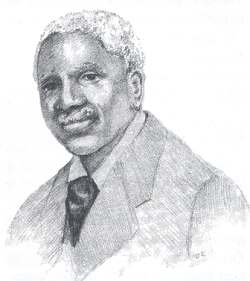
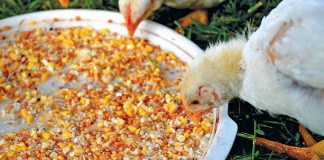






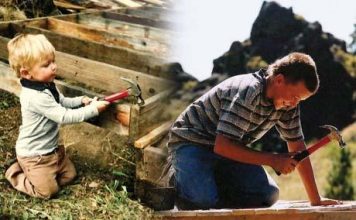
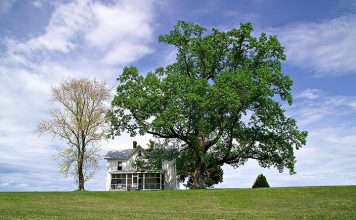
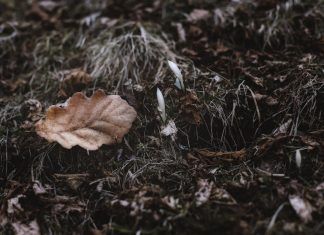
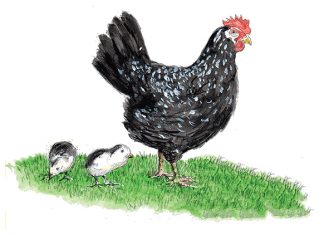

You may know a thing or two about homesteading but, it’s obvious you know nothing about African/American history, to make the comments don’t imagine much of our readership is black. Besides, what would there be to write about?
I am impressed by the wisdom of this magazine. America will never become color-blind but through your example I have hope that one day personal appearance won’t matter so much as it does now. In elementary school I read a story about Mr. Carver and was much impressed by his courage, humility, curiosity, and generous nature. His country has mostly forgotten about him and I pray more self-reliant outlets will publish his papers and write articles on his accomplishments. Great Job Backwoods Home.
this is great and I am doing a report about him.
from,
isabela
Thank you so much for your in depth article on George Washington Carver. My family has lived just across from the monument for generations. My great grandfather Lee (documented fact) was also a childhood friend of Georges. George was an amazing man….we could all learn from his life.